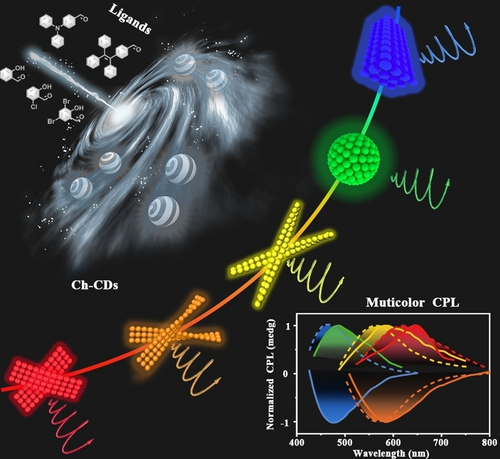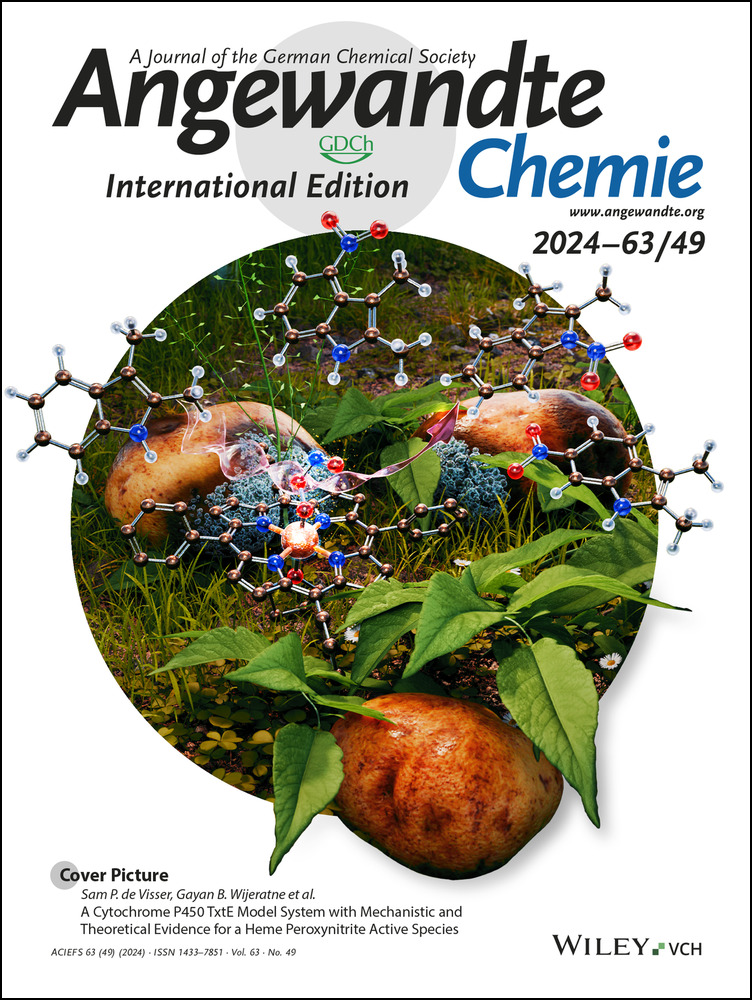Hydrogen Bond-Induced Flexible and Twisted Self-Assembly of Functionalized Carbon Dots with Customized-Color Circularly Polarized Luminescence
Graphical Abstract
We report the exciting discovery of the surface modification of carbon dots drives the construction of an assembly asymmetric environment to realize a full-color circularly polarized luminescence (CPL) in the aggregated state. Moreover, we explore panchromatic as well as white-light CPL applications of light emitting diodes and large flexible optical films, which provide new material strategies for virtual reality, medical imaging, and scientific visualization, among others.
Abstract
Circularly polarized luminescence (CPL) has numerous applications in optical data storage, quantum computing, bioresponsive imaging, liquid crystal displays, and backlights in three-dimensional (3D) displays. In addition to their competitive optical properties, carbon dots (CDs) benefit from simple and low-cost preparation, facile post-modification, and excellent resistance to photo- and chemical bleaching after carbonization. Combining the superior optical performance with polarization peculiarities through hierarchical structure engineering is imperative for the development of CDs. In this study, hydrophobic interactions of aromatic ligands, which participate in the surface-ligand post-modification process on the ground-state chiral carbon core, are employed to drive the oriented assembly. Furthermore, the residual chiral amides on CDs form multiple hydrogen bonds during gradual aggregation, causing the assembled materials to form an asymmetric bending structure. Superficial ligands interfere with the optical dynamics of the exciton radiation transition and stabilize the excited state of the assembled materials to achieve a circularly polarized signal. The linkage ligands overcome the frequent aggregation-induced quenching phenomenon that present difficulties in conventional CDs, facilitate the assembly of self-supporting films, and improve chiral optical expression. The full-color and white CPL are manipulated by simply adjusting the functional groups of the ligands, which also illustrates the versatility of the post-modification strategy. Finally, large chiral flexible films and multicolor chiral light-emitting diodes based on the stable chiral powder phosphors were constructed, thereby providing feasible materials and technical support for flexible 3D displays.
Conflict of Interests
The authors declare no conflict of interest.
Open Research
Data Availability Statement
The data that support the findings of this study are available from the corresponding author upon reasonable request.





